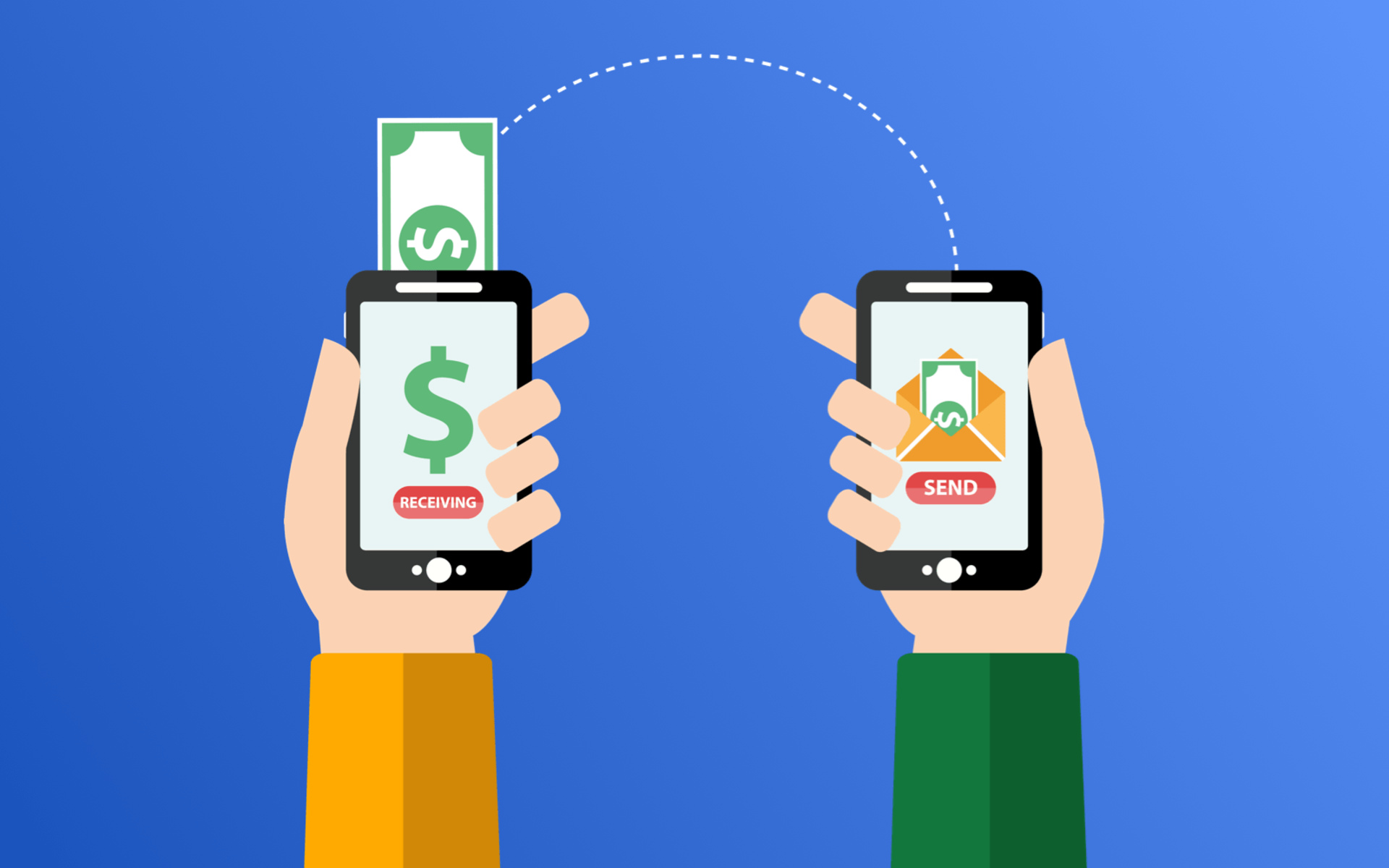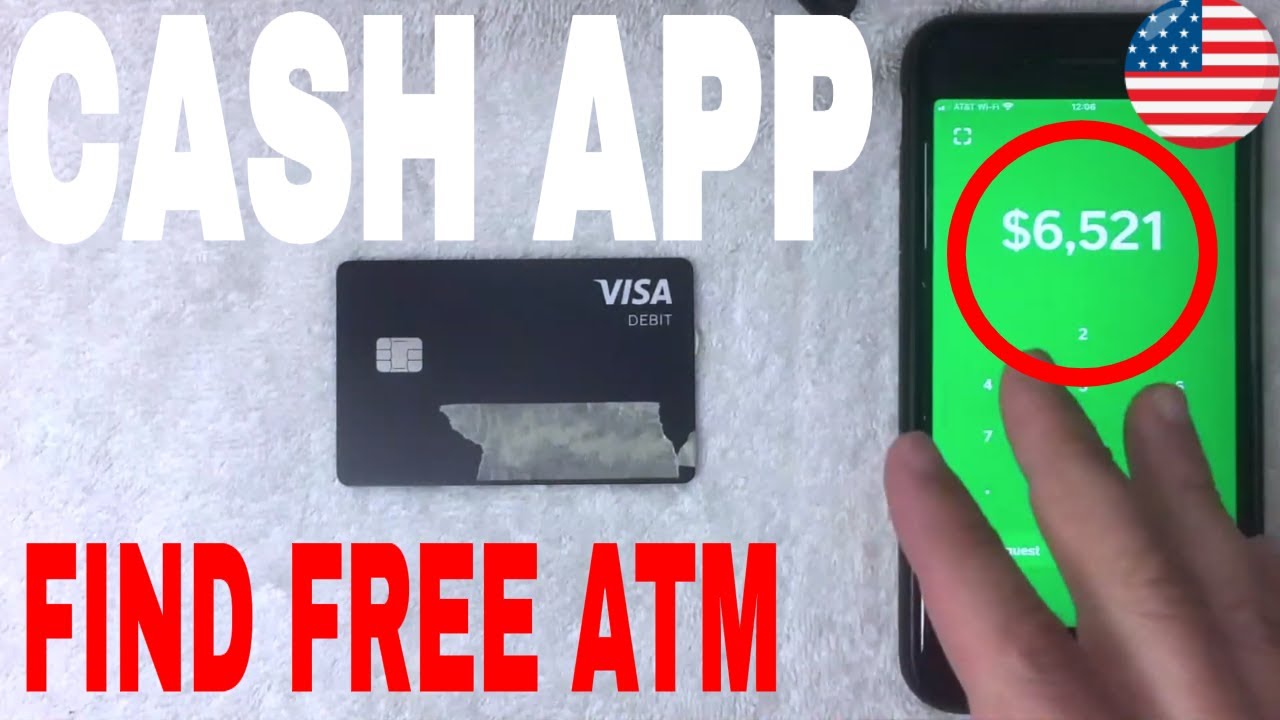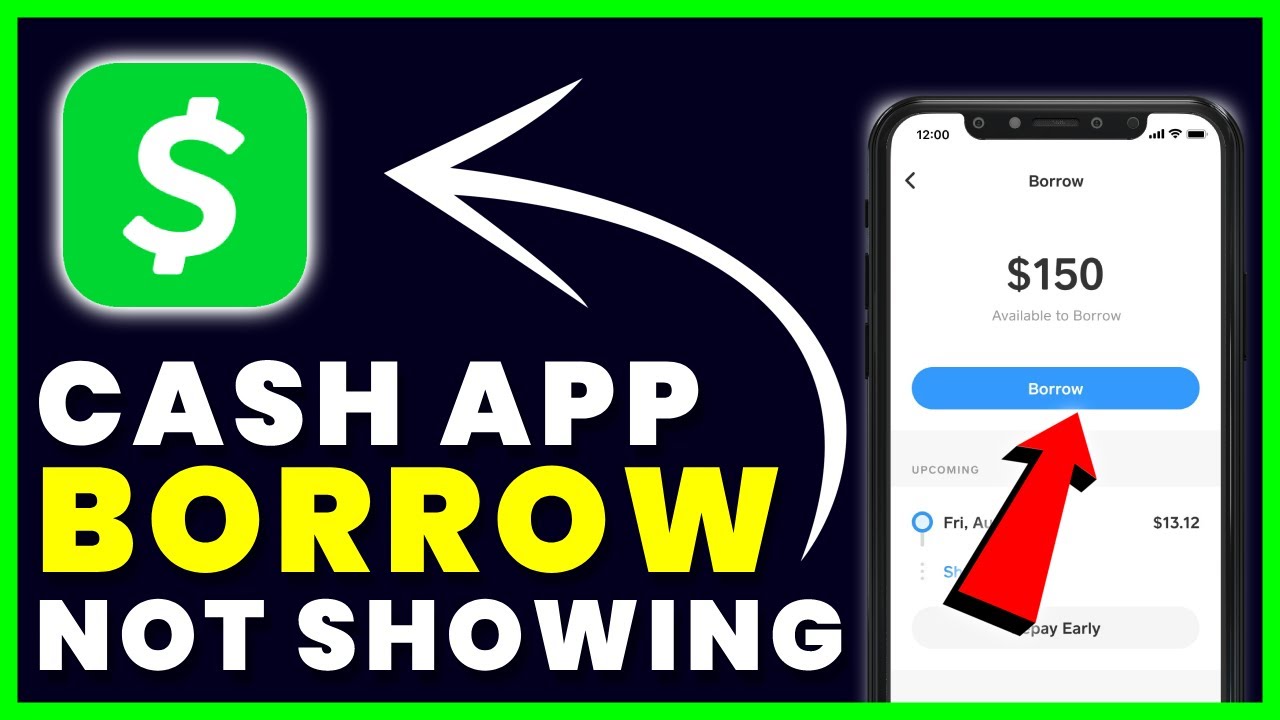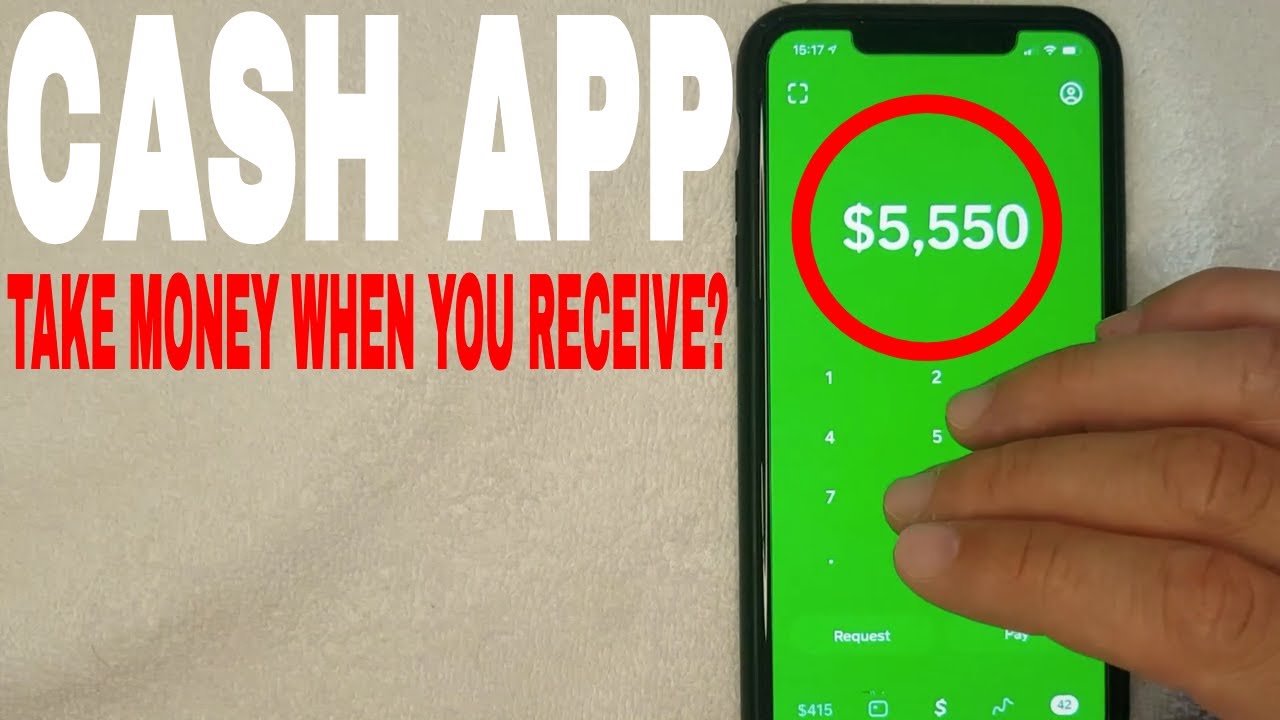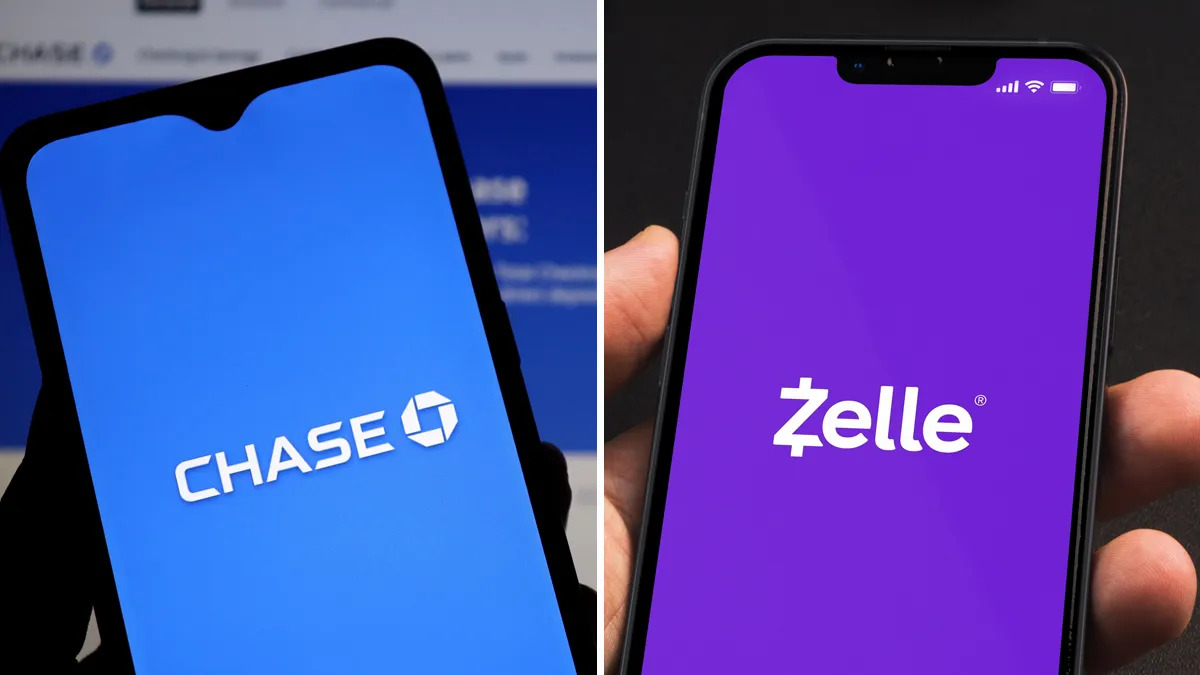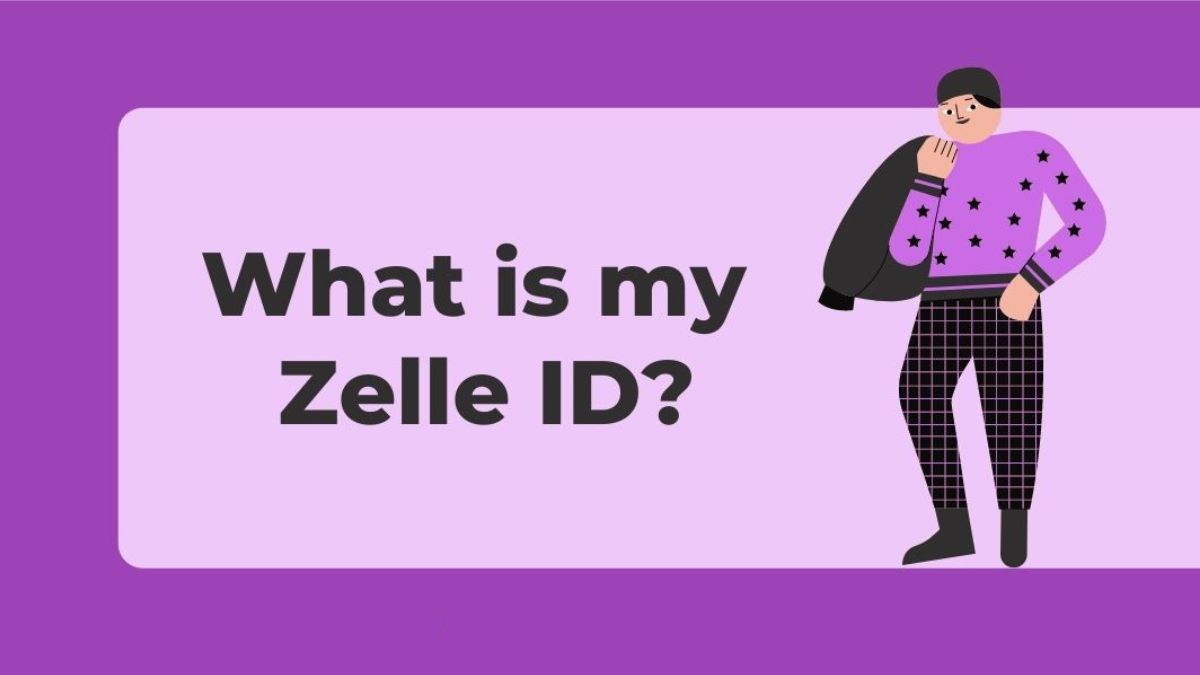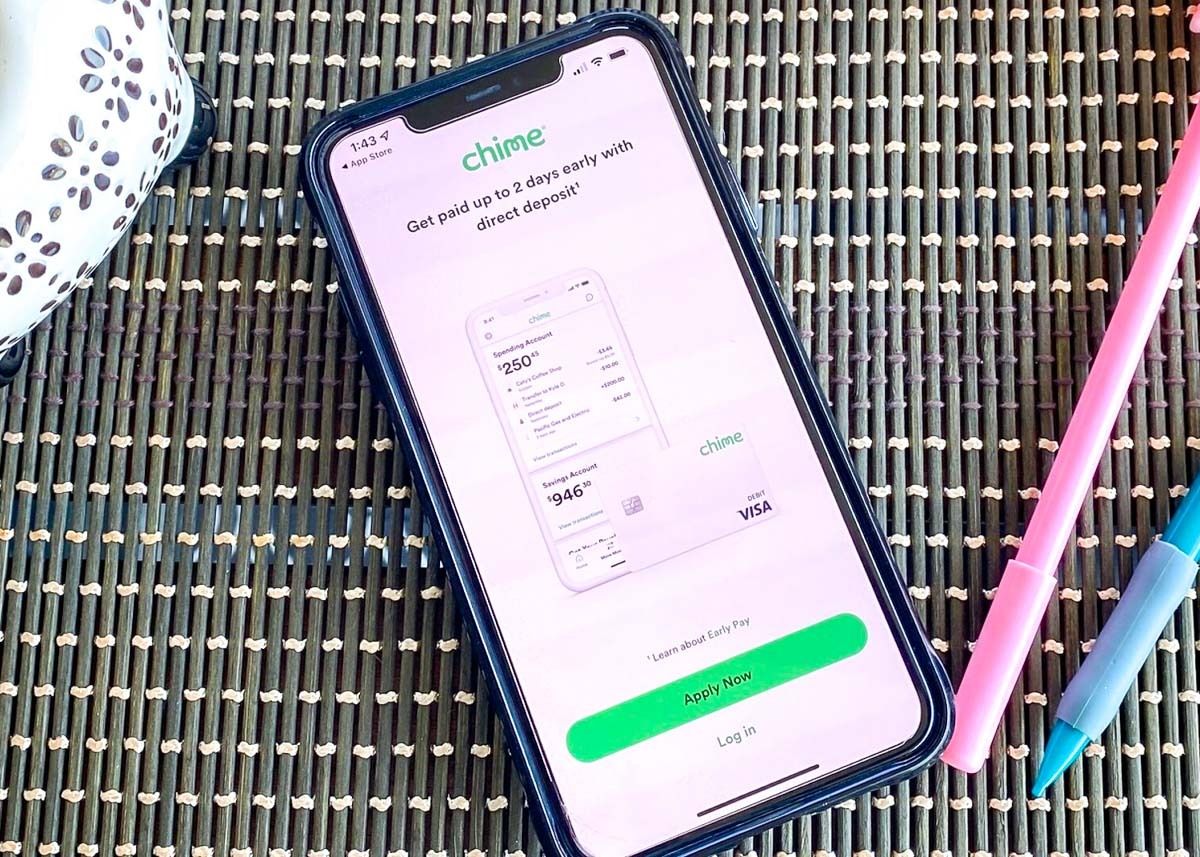Introduction
Welcome to the world of peer-to-peer money transfers, where sending and receiving money has never been easier or more convenient. With the rise of digital payment solutions, traditional methods such as cash and checks are becoming increasingly outdated. Peer-to-peer money transfer apps are revolutionizing the way we handle our finances, offering a secure and efficient method for individuals to send money to one another.
Whether you want to split a bill with friends, send money to family, or pay for goods and services, peer-to-peer money transfer apps provide a seamless and instant transaction experience. These apps eliminate the need for physical cash, checks, or money orders, allowing users to make quick and secure payments using just their smartphones.
In this article, we will explore the essential features of a peer-to-peer money transfer app and guide you through the process of building one. From choosing the right technology stack to ensuring privacy and security, we will provide you with the necessary insights to create a successful and user-friendly app.
But first, let’s delve into what peer-to-peer money transfers are and why they have become so popular.
A peer-to-peer money transfer is a transaction that occurs directly between two individuals without the need for an intermediary, such as a bank or payment processor. This direct transfer enables users to send and receive money instantly, making it a convenient alternative to traditional banking methods.
Peer-to-peer money transfer apps have gained traction due to their convenience, speed, and affordability. Sending money through a peer-to-peer app is often faster and cheaper than traditional methods, particularly for cross-border transactions. Additionally, these apps usually offer user-friendly interfaces and advanced security features to safeguard users’ personal and financial information.
Now that we understand the concept of peer-to-peer money transfers and their advantages, let’s explore the key features to consider when building a peer-to-peer money transfer app. By incorporating these features, you can ensure that your app stands out in a competitive market and provides a seamless user experience.
Understanding Peer-to-Peer Money Transfers
Peer-to-peer money transfers, also known as P2P transfers, refer to the process of transferring funds directly from one individual to another, without the involvement of traditional financial institutions. This method of money transfer has gained significant popularity in recent years due to its convenience, speed, and low transaction fees.
In traditional banking systems, transferring money often involves multiple intermediaries, such as banks, payment processors, and clearinghouses. These intermediaries add complexity and time to the process, resulting in slower transactions and higher fees. Peer-to-peer money transfers eliminate the need for these intermediaries, enabling users to send and receive money directly from their bank accounts or digital wallets.
One of the main advantages of peer-to-peer money transfers is speed. Traditional bank transfers can take several business days to complete, especially for international transactions. In contrast, P2P transfers can be executed instantly, allowing recipients to access the funds almost immediately.
Another significant advantage is the lower transaction fees associated with peer-to-peer transfers. Traditional banks often charge hefty fees for transferring money, particularly for cross-border transactions. Peer-to-peer money transfer apps, on the other hand, typically charge much lower fees or even offer free transfers within certain limits. This cost-effective approach makes P2P transfers an attractive option for individuals looking to save money on transaction fees.
Furthermore, peer-to-peer money transfers provide increased convenience and accessibility. With a P2P transfer app installed on their smartphones, users can send or receive money anytime, anywhere. Users simply need to link their bank accounts or digital wallets to the app, making the transfer process quick and hassle-free.
When it comes to security, peer-to-peer money transfer apps utilize advanced encryption technology to protect users’ personal and financial information. These apps often require authentication measures, such as fingerprints or PIN codes, to ensure that only authorized individuals can access and transfer funds. Additionally, many P2P transfer apps offer dispute resolution mechanisms and customer support to address any issues that may arise during the transfer process.
In summary, peer-to-peer money transfers offer a streamlined and cost-effective alternative to traditional banking methods. With their speed, affordability, and convenience, P2P transfer apps have transformed the way we handle our finances. In the next section, we will explore the key features that make a peer-to-peer money transfer app successful and user-friendly.
Key Features of a Peer-to-Peer Money Transfer App
When it comes to building a successful peer-to-peer money transfer app, there are several key features that you should consider integrating. These features will not only enhance the user experience but also ensure the security and efficiency of the transaction process. Let’s explore these essential features in detail:
- User-Friendly Interface: A well-designed and intuitive user interface is crucial for a peer-to-peer money transfer app. Users should be able to navigate the app easily, perform transactions effortlessly, and access their transaction history conveniently.
- Secure Login and Authentication: Implementing strong login and authentication measures, such as biometric recognition (fingerprint or face ID) or two-factor authentication, enhances the security of the app. This ensures that only authorized users can access their accounts and initiate transactions.
- Bank Account or Wallet Integration: To facilitate seamless money transfers, users should be able to link their bank accounts or digital wallets to the app. This allows for direct transfer of funds to and from their accounts without the need for manual input of banking details.
- Send and Receive Money: The core functionality of a peer-to-peer money transfer app is the ability to send and receive money. Users should be able to enter the recipient’s information easily, specify the transfer amount, and execute the transaction swiftly.
- Transaction History and Receipts: Providing users with a comprehensive transaction history and digital receipts allows them to keep track of their financial activities. This feature enhances transparency and enables users to refer back to previous transactions if needed.
- Instant Notifications: Real-time notifications are essential to keep users informed about the status of their transactions, including successful transfers, pending transactions, or failed transfers. Instant notifications provide users with peace of mind and enable them to take immediate action if necessary.
- Exchange Rates and Currency Conversion: For international money transfers, including up-to-date exchange rates and the ability to convert currencies within the app can be a valuable feature. This eliminates the need for users to rely on external sources to calculate exchange rates.
- Security and Fraud Protection: Implementing robust security measures, such as encryption, fraud detection algorithms, and transaction monitoring, is crucial to safeguard users’ financial information and protect against fraudulent activities. Building trust and ensuring the security of the app is paramount to its success.
By incorporating these key features, you can create a peer-to-peer money transfer app that provides a seamless and secure transaction experience. In the next section, we will discuss the importance of selecting the right technology stack to develop your app.
Choosing the Right Technology Stack
When it comes to building a peer-to-peer money transfer app, selecting the right technology stack is critical to ensuring a smooth and efficient development process. The technology stack encompasses the programming languages, frameworks, libraries, and tools that will be used to create the app. Here are some factors to consider when choosing the right technology stack:
Platform: Decide whether you want to develop a native app for a specific platform, such as iOS or Android, or go for a cross-platform solution that allows you to build one app that can run on multiple platforms. Native apps provide a more optimized user experience, while cross-platform apps offer faster development and easier maintenance.
Backend Development: Choose a backend programming language that fits your team’s expertise and the requirements of your app. Popular languages for backend development include Node.js, Python, Ruby, and Java. Consider the scalability, performance, and security capabilities of the chosen language.
Framework: Utilize a backend framework that provides a solid foundation for developing your app’s server-side logic and database management. Frameworks such as Express.js (for Node.js), Django (for Python), or Ruby on Rails (for Ruby) can streamline the development process and provide essential features out of the box.
Database: Decide on the type of database that best suits your app’s requirements. Relational databases like MySQL or PostgreSQL are suitable for handling structured data, while NoSQL databases like MongoDB or Firebase can handle unstructured or semi-structured data efficiently. Consider factors such as scalability, data consistency, and ease of integration.
APIs and Integrations: Consider the third-party APIs and services you may need to integrate into your app. For example, integrating with payment gateways like PayPal or Stripe will enable secure and seamless transactions. Research the reputation, documentation, and support of the APIs and integrations you plan to use.
Frontend Development: Choose a frontend development framework or library that aligns with your team’s skills and the desired user experience. Options include ReactJS, Angular, or Vue.js. The chosen framework should provide reusable components, efficient rendering, and a responsive design for a seamless user interface.
User Interface (UI) Design: Decide on the design tools and libraries you will use to create an appealing and user-friendly interface. Ensure that the chosen tools support responsive design principles and are compatible with your frontend framework.
Testing and Debugging: Consider tools and frameworks that facilitate testing and debugging during the development process. Automation testing frameworks like Selenium or Jest, along with debugging tools like Chrome DevTools, can aid in identifying and fixing issues.
Scalability and Security: Assess the scalability and security features of the technologies in your stack. Ensure that they can handle a growing user base and protect sensitive data through encryption, authentication mechanisms, and regular security updates.
Community and Support: Assess the community support, documentation, and availability of resources for the technologies you choose. A vibrant community can provide valuable assistance, resources, and updates to ensure the longevity of your app.
By carefully evaluating these factors and selecting the appropriate technology stack, you can lay a solid foundation for the development of your peer-to-peer money transfer app. In the next section, we will delve into another crucial aspect of building the app: setting up a secure payment gateway.
Setting Up a Secure Payment Gateway
When building a peer-to-peer money transfer app, setting up a secure payment gateway is crucial to ensuring the safety and integrity of financial transactions. A payment gateway acts as the intermediary between your app and the financial institutions involved in the transfer process. Here are some key considerations for setting up a secure payment gateway:
Choose a Reliable Payment Processor: Select a trusted and reliable payment processor that complies with industry standards and has a robust reputation for security. Popular options include PayPal, Stripe, Braintree, and Square. Research their features, transaction fees, security measures, and compatibility with your app’s technology stack.
Implement Encryption and Data Protection: Ensure that all sensitive data, including users’ personal and financial information, is encrypted using secure protocols such as SSL/TLS. Implement secure data storage practices, such as hashing and salting passwords, to protect against unauthorized access.
Tokenization and Fraud Prevention: Tokenization is a method of replacing sensitive data with randomly generated tokens, reducing the risk of data exposure. Implement tokenization techniques to securely store and transmit payment information. Include fraud prevention measures such as address verification, card verification values (CVV), and risk assessment algorithms to detect and prevent fraudulent activities.
Compliance with PCI DSS: Ensure that your payment gateway is compliant with the Payment Card Industry Data Security Standard (PCI DSS). This standard outlines security requirements for the handling, processing, and storage of cardholder data. Complying with PCI DSS helps protect user payment information and reduces the risk of data breaches.
Secure API Integration: When integrating the payment gateway into your app, follow secure API integration practices. Use secure communication protocols and implement proper authentication and authorization mechanisms. Regularly update and patch the API integration to address any security vulnerabilities.
Monitor and Analyze Transactions: Set up real-time transaction monitoring and analysis to detect and prevent fraudulent or suspicious activities. Implement systems to identify patterns, anomalies, and potential risks, allowing for immediate action to be taken when necessary.
User Education and Awareness: Educate your app’s users about safe transaction practices, such as using strong passwords, avoiding public Wi-Fi networks, and being cautious of phishing attempts. Promote awareness of common scams and encourage users to report any suspicious activities they encounter while using the app.
Regular Security Audits: Conduct regular security audits of your payment gateway to ensure it remains up to date with the latest security practices. Work with security experts to identify potential vulnerabilities and implement necessary updates and patches.
By following these considerations and best practices, you can establish a secure payment gateway for your peer-to-peer money transfer app. In the next section, we will discuss the importance of designing user-friendly interfaces to enhance the user experience.
Designing User-friendly Interfaces
Designing user-friendly interfaces is a crucial aspect of building a successful peer-to-peer money transfer app. The interface is the first point of contact between users and your app, so it’s essential to create an intuitive and visually appealing design that enhances the overall user experience. Here are some key considerations for designing user-friendly interfaces:
Clean and Intuitive Navigation: Ensure that the navigation within your app is clear, easy to understand, and intuitive. Use descriptive labels, organize content logically, and provide visual cues to guide users through different areas of the app. Consider implementing gestures or swiping actions for seamless navigation.
Consistent and Responsive Design: Maintain consistency in the overall design of your app, including colors, typography, and layout. Consistency helps users feel familiar with the interface and provides a cohesive experience across different screens. Additionally, make sure your app is responsive and adapts smoothly to different screen sizes and orientations.
User-friendly Input Forms: Design input forms that are user-friendly, with clear and accessible fields. Use validation techniques to provide real-time feedback and assist users in entering accurate information. Consider implementing auto-fill suggestions and input masks to streamline the entry process.
Visual Hierarchy and Information Organization: Use visual hierarchy techniques to prioritize important information and guide users’ attention. Group related information together in a logical manner and utilize headings, subheadings, and bullet points to enhance readability and scannability of content.
Appropriate use of Visuals and Typography: Utilize visually appealing graphics and images to enhance the user experience. Choose fonts and typography that are legible and appropriate for the content. Consider the accessibility of your design by ensuring sufficient color contrast and providing alternative text for non-text elements.
Efficient Transaction Flow: Simplify the transaction flow as much as possible, minimizing steps and reducing friction for users. Provide clear instructions at each stage of the transaction process and ensure that users have a clear understanding of the actions they need to take.
Feedback and Confirmation: Provide real-time feedback to users during transactions, notifying them of successful transactions, errors, or any other relevant information. Include confirmation screens or dialogs to give users a sense of completion and reassurance.
Accessibility and Inclusivity: Consider the accessibility needs of all users when designing your app. Ensure that the interface is accessible to individuals with disabilities, including support for screen readers, keyboard navigation, and adjustable font sizes.
User Testing and Feedback: Conduct user testing to gather feedback and insights on the usability of your app’s interface. Analyze user behavior and incorporate their feedback to make continuous improvements to the design and enhance the overall user experience.
Continuous Iteration and Optimization: Keep refining and optimizing your app’s interface based on user feedback and analytics. Monitor user behavior, identify pain points, and implement iterative improvements to ensure a seamless and user-friendly experience.
By prioritizing user-friendly interface design, you can create an app that not only provides a smooth and intuitive experience but also builds trust and loyalty among your users. In the next section, we will discuss the implementation of a peer-to-peer transaction flow in your app.
Implementing Peer-to-Peer Transaction Flow
Implementing an efficient and user-friendly peer-to-peer transaction flow is a critical aspect of building a successful money transfer app. A well-designed transaction flow ensures that users can easily initiate and complete transactions with minimal effort. Here are some key considerations for implementing the peer-to-peer transaction flow:
User Registration and Account Setup: Start by providing a seamless user registration process, allowing users to create an account easily. Gather essential information such as name, email address, and phone number. To enhance security, implement identity verification measures like phone number verification or email confirmation.
Linking Bank Accounts or Digital Wallets: Allow users to link their bank accounts or digital wallets to the app. Provide clear instructions and a user-friendly interface to guide them through the process. Implement secure authentication mechanisms, such as two-factor authentication, to ensure the privacy and security of their financial information.
Selecting Recipients and Entering Transaction Details: Enable users to select recipients from their contacts or enter recipient details manually. Implement features to facilitate quick and accurate entry of transaction details, such as transaction amount, purpose, and any associated notes. Offer suggestions or auto-fill options to streamline the process where possible.
Transaction Confirmation and Verification: Provide users with a clear summary of the transaction details before finalizing the transfer. Allow them to review and verify the information to ensure its accuracy. Implement safeguards to prevent accidental or unauthorized transfers, such as requiring authentication or confirmation codes.
Processing and Executing the Transaction: Facilitate a smooth and quick transaction process, aiming for instant or near-instant transfers. Leverage APIs provided by the payment processor to securely process and execute the transfer. Implement meaningful success messages or notifications to confirm the successful completion of the transaction.
Transaction History and Receipts: Store and display a comprehensive transaction history within the app, allowing users to review past transactions. Provide users with access to digital receipts or transaction details, offering transparency and enabling them to track their financial activities. Implement sorting and filtering options for easier navigation through the transaction history.
Dispute Resolution and Customer Support: Have a mechanism in place to handle any transaction-related disputes or issues that users may encounter. Provide clear instructions on how users can seek assistance or raise concerns. Offer responsive customer support options, such as live chat or email, to resolve disputes promptly and help maintain user trust in the app.
Regular Security Audits and Updates: Conduct regular security audits of your transaction flow to identify and address any vulnerabilities or potential risks. Stay up to date with the best practices in security and encryption to ensure the protection of users’ financial information.
User Feedback and Iterative Improvements: Encourage user feedback on the transaction flow and actively seek insights to identify areas for improvement. Leverage analytics and user behavior data to pinpoint pain points or usability issues. Use this feedback to make iterative improvements and optimize the transaction flow over time.
By implementing a well-designed and user-centric peer-to-peer transaction flow, you can ensure that your money transfer app provides a seamless and hassle-free experience for users. In the next section, we will discuss the importance of enabling instant notifications to keep users informed about their transactions.
Enabling Instant Notifications
Enabling instant notifications is a crucial aspect of building a reliable and engaging peer-to-peer money transfer app. Instant notifications keep users informed about the status of their transactions in real-time, providing them with confidence and peace of mind. Here are some key considerations for implementing instant notifications:
Transaction Updates: Send immediate notifications to users as soon as a transaction is initiated, providing them with confirmation that their transfer request has been received and is being processed. Include relevant details such as transaction amount and recipient information to ensure clarity.
Transaction Success: Notify users instantly when their transaction is successfully completed. Celebrate these successful transactions and show appreciation through positive, encouraging messages. Instantly acknowledging the successful transfer enhances user satisfaction and instills a sense of trust in your app.
Transaction Failures or Errors: If a transaction fails or encounters an error, promptly notify users with an informative error message. Explain the reason for the failure and provide guidance on what steps users can take to resolve the issue. Clear and timely communication during such situations helps users understand what went wrong and how to address it.
Security Alerts: Instantly alert users if any suspicious or unauthorized activities related to their account or transactions are detected. This could include activities such as login attempts from unrecognized devices or changes to account settings. Promptly informing users of potential security breaches empowers them to take immediate action to protect their accounts.
Transaction Pending: Inform users when a transaction is pending and provide updates as the status changes. This allows users to track the progress of their transactions and have visibility into the estimated time for completion. Keeping users informed during the pending stage helps manage expectations and provides reassurance that the transaction is being processed.
Reminders and Notifications: Set up reminders or notifications for users to complete pending actions or verify their transactions. For example, if a user initiates a transaction but forgets to complete the required verification step, send a reminder notification to prompt them to take necessary action. These reminders can help prevent delays or incomplete transactions.
Customization and Preferences: Provide users with the ability to customize their notification preferences, allowing them to choose the type and frequency of notifications they receive. Respect their preferences and ensure that users can easily manage their notification settings within the app.
Optimization for Different Platforms and Devices: Ensure that the instant notifications are optimized for various platforms and devices. Notifications should be consistent and properly formatted across web browsers, mobile devices, and operating systems. Test notifications on different devices to guarantee a seamless experience for all users.
Clear and Concise Language: Craft notifications using clear and concise language that users can easily understand. Avoid jargon or technical terms that may confuse users. Use simple and straightforward language to convey the necessary information effectively.
Continuous Monitoring and Improvement: Regularly monitor the performance and effectiveness of your instant notification system. Analyze user feedback and engagement metrics to identify areas for improvement. Use this data to fine-tune your notifications and enhance the overall user experience.
By implementing instant notifications, you not only keep users engaged and informed but also establish a sense of transparency and reliability in your peer-to-peer money transfer app. In the next section, we will discuss the importance of ensuring privacy and security in your app.
Ensuring Privacy and Security
Ensuring privacy and security is of utmost importance when building a peer-to-peer money transfer app. Users need to trust that their personal and financial information is safeguarded throughout the transaction process. Here are some key considerations to ensure privacy and security in your app:
Secure Data Transmission: Use secure communication protocols, such as SSL/TLS, to encrypt data transmitted between the app and servers. This protects sensitive information from unauthorized access during transmission, providing an additional layer of security.
Data Encryption: Implement strong encryption techniques to protect stored data, including user account details, transaction information, and any other sensitive data. Use encryption algorithms that comply with industry standards to ensure data confidentiality even if it gets compromised.
User Authentication and Authorization: Implement robust authentication mechanisms to verify the identity of users before granting access to their accounts. This can include password-based authentication, two-factor authentication, or biometric recognition. Authorization mechanisms should control user permissions to ensure that users can only perform authorized actions.
Regular Security Audits: Conduct regular security audits to assess the vulnerability and strength of your app’s security measures. Engage security experts who can identify potential weaknesses and suggest improvements. Address any identified vulnerabilities promptly and proactively.
Secure API Integration: Ensure that any APIs used in your app align with security best practices. Implement secure communication and authentication mechanisms when integrating with payment gateways, third-party services, or other external APIs. Regularly update and patch API integrations to address any security vulnerabilities.
Fraud Detection and Prevention: Incorporate fraud detection algorithms and measures to identify and prevent fraudulent activities. This can include monitoring suspicious transactions, analyzing user behavior patterns, and implementing risk assessment mechanisms to flag potentially fraudulent transactions.
Information Privacy: Clearly communicate your app’s privacy policy and ensure that you comply with applicable privacy regulations. Obtain user consent before collecting and storing their personal information. Implement measures to protect user privacy, such as anonymizing data where possible and providing users with control over their data.
Secure Third-Party Integrations: If your app integrates with external services or APIs, ensure that these integrations meet robust security standards. Review the security measures and practices of third-party providers to ensure the privacy and protection of user data.
Regular Security Updates: Stay updated with the latest security patches and updates for the technologies and frameworks used in your app. Regularly update the app to address any security vulnerabilities that may arise and stay ahead of potential threats.
Education and Awareness: Educate app users about best security practices, such as creating strong passwords, avoiding public Wi-Fi networks for transactions, and being cautious of phishing attempts. Promote awareness of common security risks and encourage users to report any suspicious activities they encounter while using the app.
Transparent Security Measures: Communicate to your users the security measures implemented in your app. Assure them that their information is being protected and provide support channels for users to report any security concerns or issues they may encounter.
By prioritizing privacy and security in your peer-to-peer money transfer app, you can build trust and confidence among users, ensuring a secure environment for their financial transactions. In the next section, we will discuss the importance of testing and debugging the app to ensure its functionality and performance.
Testing and Debugging the App
Testing and debugging are crucial stages in the development process of a peer-to-peer money transfer app. Proper testing ensures that the app functions smoothly, meets user expectations, and is free from critical bugs or errors. Here are some key considerations for testing and debugging your app:
Unit Testing: Conduct comprehensive unit testing to verify the functionality of individual components and modules of your app. Unit tests help identify any issues early on and ensure that each component works as intended before integrating them into the app.
Integration Testing: Perform integration testing to ensure that different components of your app work seamlessly together. Test the interaction between different modules and check for any unexpected behaviors or conflicts.
User Acceptance Testing: Involve real users in the testing process to obtain feedback and assess the user experience. Conduct usability tests to evaluate how easily users can navigate through the app and perform transactions. Gather feedback on any issues or areas of improvement and make necessary adjustments based on user input.
Compatibility Testing: Test your app on various devices, operating systems, and web browsers to ensure compatibility and consistent user experience across different platforms. Pay attention to differences in screen sizes, resolutions, and input methods, resolving any layout or functionality issues that may arise.
Performance Testing: Evaluate the app’s performance under various scenarios, including heavy transaction loads, slow network connections, or simultaneous user activity. Measure response times, load times, and resource utilization to identify any performance bottlenecks and optimize the app’s performance accordingly.
Security Testing: Conduct thorough security testing to identify vulnerabilities and weaknesses in your app’s security measures. Perform penetration testing to simulate real-world attacks and ensure that sensitive user information is protected. Address any security issues or vulnerabilities discovered during this process.
Error Handling and Logging: Implement proper error handling mechanisms to provide useful error messages whenever an error occurs. Log errors and exceptions to assist with debugging and troubleshooting. Monitor and analyze logged errors to identify patterns or recurring issues that need attention.
Usability Testing: Evaluate the overall usability and user experience of your app. Analyze user flows, accessibility, and ease of use. Identify any usability issues, such as confusing navigation or unintuitive interactions, and make necessary improvements to enhance the overall user experience.
Testing Edge Cases: Test your app with various edge and corner cases to ensure that it handles unexpected scenarios gracefully. Consider different transaction amounts, international transfers, network interruptions, and other potential scenarios that may affect the app’s functionality.
Continuous Testing and Feedback Loop: Implement a continuous testing approach, integrating testing practices throughout the development lifecycle. Regularly gather user feedback and analyze app usage data to identify potential issues or areas for improvement. Use this feedback and data to iterate and enhance the app’s functionality and performance.
Collaboration and Communication: Foster collaboration between developers, testers, and stakeholders to ensure effective communication during the testing and debugging process. Maintain clear channels of communication to report and track identified issues, facilitating efficient bug fixing and resolution.
By thoroughly testing and debugging your peer-to-peer money transfer app, you can ensure its functionality, security, and performance, providing users with a reliable and seamless experience. In the next section, we will discuss the process of launching and marketing your app to attract users.
Launching and Marketing the App
Launching and effectively marketing your peer-to-peer money transfer app is essential to attract users and drive adoption. A well-planned launch and robust marketing strategy can help generate buzz, increase visibility, and ultimately lead to a successful app launch. Here are some key considerations for launching and marketing your app:
Identify your Target Audience: Clearly define your target audience based on their demographics, preferences, and needs. Understanding your target audience will allow you to tailor your marketing efforts and reach the right people.
Unique Selling Proposition (USP): Clearly communicate the unique features and benefits of your app. Highlight what sets your app apart from competitors in terms of security, user experience, transaction speed, or any other differentiating factors.
Create Compelling App Store Listings: Optimize your app store listings with relevant keywords, compelling descriptions, and high-quality app screenshots or videos. Highlight the key features, benefits, and user testimonials to provide social proof and attract potential users.
Engaging Website and Landing Pages: Create a visually appealing and informative website for your app, showcasing the app’s features, benefits, and user testimonials. Design landing pages to capture leads and encourage potential users to sign up or download the app.
Content Marketing: Develop a comprehensive content marketing strategy to create informative blog posts, articles, or videos related to money management, financial tips, or the benefits of peer-to-peer money transfer. This content will attract users who are looking for relevant information and can be shared on social media to expand your reach.
App Store Optimization (ASO): Optimize your app’s visibility on app stores by conducting app store optimization (ASO). This includes optimizing your app’s title, description, and keywords. Regularly monitor and update your ASO strategy based on user insights and feedback.
Social Media Presence: Leverage various social media platforms to engage with your target audience, build brand awareness, and promote your app. Utilize social media advertising, influencer partnerships, or community events to boost visibility and encourage downloads.
Promotion and Partnerships: Collaborate with relevant industry influencers, financial institutions, or other businesses that align with your app’s target audience. Seek partnerships that can help amplify your app’s reach and promote it to their existing customer base.
Referral Programs and Incentives: Implement referral programs that encourage users to invite others to join the app. Offer incentives such as referral bonuses or discounts to incentivize users to spread the word about your app.
App Analytics and User Feedback: Continuously track and analyze user data through app analytics tools to gain insights into user behavior, user acquisition channels, and feature usage. Incorporate user feedback to improve the app’s performance and address any issues or suggestions raised by users.
App Updates and Enhancements: Regularly update your app with new features, improvements, and bug fixes based on user feedback and analytics insights. Continuously enhancing your app will attract and retain users while showcasing a commitment to app quality and user satisfaction.
Customer Support and Reviews: Provide prompt and helpful customer support to address any user issues or concerns. Encourage users to leave positive reviews on app stores and respond to reviews, showcasing your dedication to providing excellent customer service.
By strategically launching and effectively marketing your peer-to-peer money transfer app, you can build awareness, attract users, and drive adoption. Utilize a combination of online and offline marketing tactics to reach your target audience and position your app as a reliable and convenient solution for money transfers.
Conclusion
Building a successful peer-to-peer money transfer app requires careful planning, attention to detail, and a user-centric approach. By understanding the concept of peer-to-peer money transfers and considering the key features of such apps, you can create a seamless and secure platform for individuals to send and receive money.
Choosing the right technology stack, setting up a secure payment gateway, and designing user-friendly interfaces are essential steps in creating a user-friendly and reliable app. Implementing a well-thought-out peer-to-peer transaction flow, enabling instant notifications, and prioritizing privacy and security further enhance the user experience and build trust among users.
Thorough testing and debugging ensure that your app is functional, secure, and performs optimally. Launching and marketing your app effectively will increase visibility, lead to user adoption, and attract a loyal user base. Continuously monitoring user feedback, making iterative improvements, and providing excellent customer support will help maintain user satisfaction and keep your app ahead of the competition.
Overall, building a peer-to-peer money transfer app requires a combination of technical expertise, user-focused design, and effective marketing strategies. By following these best practices, you can create an innovative and seamless app that empowers users to easily and securely transfer money, revolutionizing the way they handle their financial transactions.







